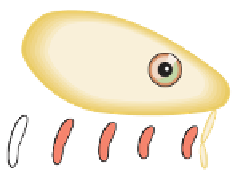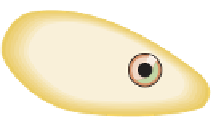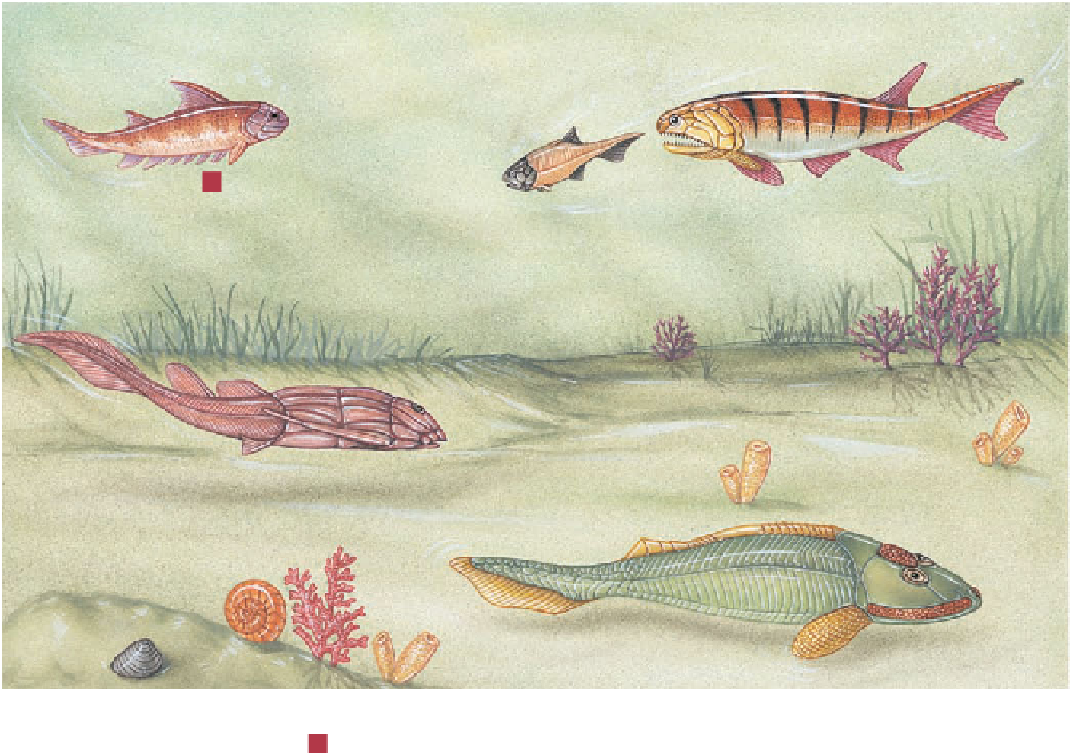Geology Reference
In-Depth Information
Parexus
(acanthodian)
c
Cheirolepis
(ray-finned)
d
Bothriolepis
(placoderm)
b
emicyclaspis
(ostracoderm)
a
◗
Figure 21.18
Devonian Seafl oor Restoration of a Devonian seafl oor showing
a
an ostracoderm,
b
a placoderm,
c
an acanthodian, and
d
a ray-fi nned fi sh.
The placoderms showed consid-
erable variety, including small bottom
dwellers (Figure 21.18b), as well as large
major predators such as
Dunkleosteus
,
a Late Devonian fish that lived in the
midcontinental North American epeiric
seas (
Skull
Mouth
Figure 21.20a). It was by far the
largest fi sh of the time, reaching a length
of more than 12 m. It had a heavily ar-
mored head and shoulder-region, a huge
jaw lined with razor-sharp bony teeth,
and a fl exible tail, all features consistent
with its status as a ferocious predator.
Besides the abundant acanthodi-
ans, placoderms, and ostracoderms,
other fi sh groups, such as the cartilagi-
nous and bony fi sh, also evolved during the Devonian Pe-
riod. Small wonder, then, that the Devonian is informally
called the “Age of Fish,” because all major fi sh groups were
present during this time period.
The
cartilaginous fish
(class Chrondrichthyes)
(Table 21.2), represented today by sharks, rays, and skates,
first evolved during the Early Devonian, and by the Late
Devonian, primitive marine sharks such as
Cladoselache
were abundant (Figure 21.20b). Cartilaginous fish have
◗
Gill slit
Gill arch
◗
Figure 21.19
Evolution of the Vertebrate Jaw The evolution of the vertebrate jaw is
thought to have begun from the modifi cation of the fi rst two or three anterior gill arches.
This theory is based on the comparative anatomy of living vertebrates.
greatly reduced body armor (Figure 21.18c and Table 21.2).
Although their relationship to other fish is not yet well
established, many scientists think that the acanthodians in-
cluded the ancestors of the present-day bony and cartilagi-
nous fi sh groups.
The other jawed fi sh, the
placoderms
(class Placoder-
mii), whose name means “plate-skinned,” evolved during
the Silurian (Table 21.2). Placoderms were heavily armored,
jawed fi sh that lived in both freshwater and the ocean.


















Search WWH ::

Custom Search